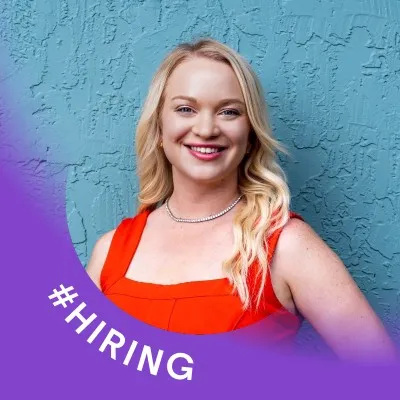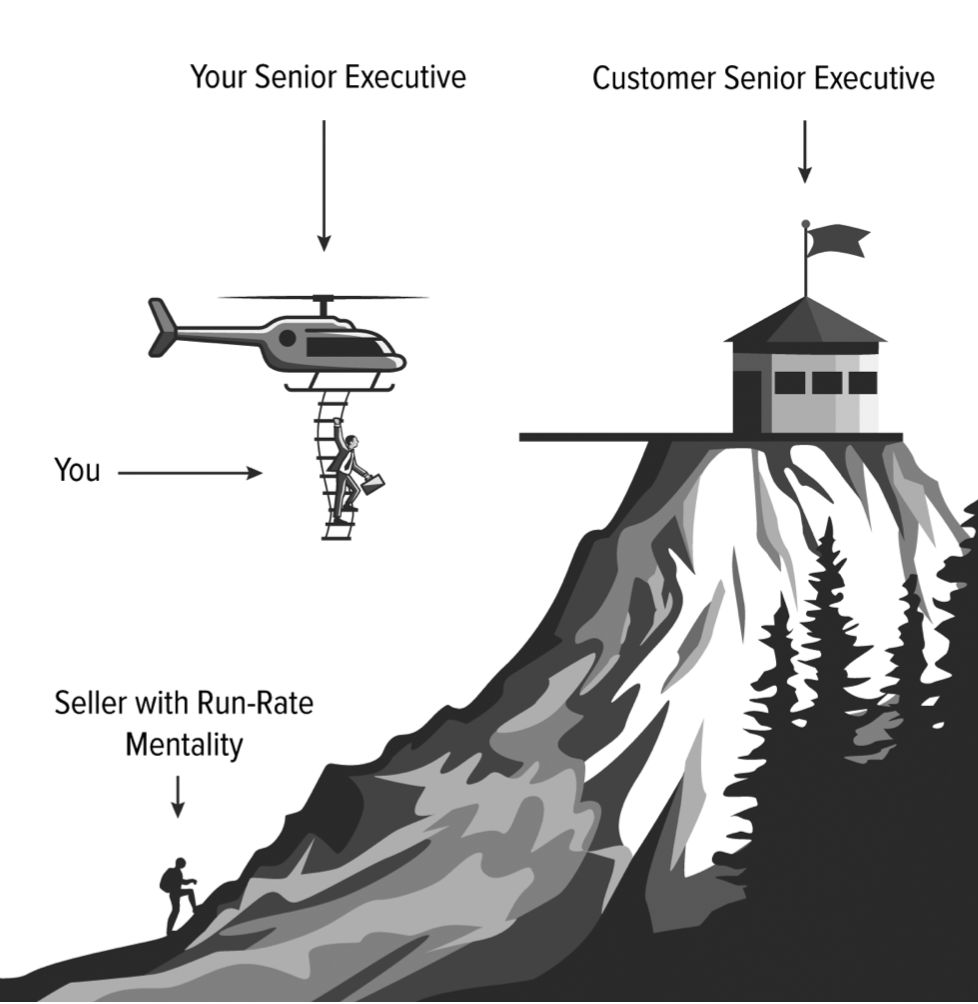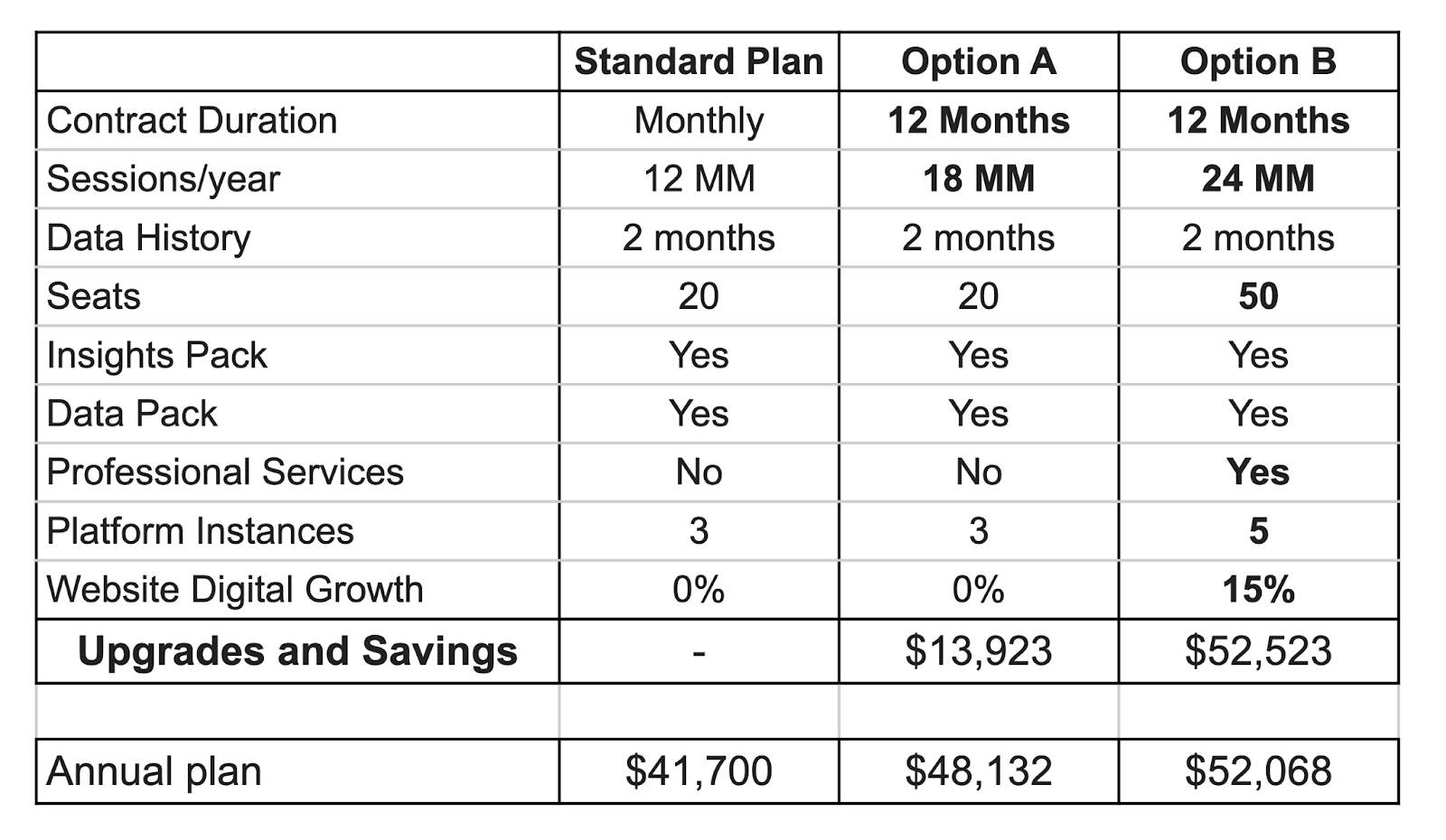The Library of Uncommon Sales Practices
Hard-Won, Non-Traditional Advice from Top Performing Sellers.
Subscribe. Get new playbooks like this one by email.
Henry Ford would be proud.
The process he built in the early 1900’s is still the bedrock of today’s sales organization. Sure, there’s more software in the mix now. But the premise is the same:
An efficient, repeatable process that mass-produces revenue (or automobiles).
“Scalable” is the mission. Consistency and best (i.e. common) practices are the method. “Follow the process or get cut” is an unspoken rule across sales floors. The learning — and failure — from running experiments with new sales practices isn't worth praising in and of itself. Only to the extent it produces revenue.
This puts reps on an assembly line.
Just look at most sales software's website. They'll promise to polish a seller’s rough edges into “clones of your best rep.” Which creates a flat, two-dimensional experience for both buyers and sellers. Surely, there’s another way.
Think and Sell Different: Non-Traditional Advice
If you’re feeling, “No! That’s not me at all,” congrats. You’re part of the minority who thinks and sells differently.
That’s a good thing, because if you want to create uncommon results, you’ll need to develop a set of uncommon sales practices. Practices that operate like frameworks, not templates, with room to adapt them for your style.
One of my mantras comes from Dostoevsky’s Crime and Punishment. It says, "To go wrong in one's own way is better than to go right in someone else's." It’s why I resonate with Andy Paul’s description of his career:
I didn’t substitute someone else’s judgment for my own. I was accountable. If I was going to fail, it was going to be on my terms. Except I didn’t. And, the satisfaction I felt from doing it my way, and the motivation I felt to keep improving, skyrocketed.
This is my hope for you as you dig into this library.
I hope you learn to respect your own instincts, opinions, and beliefs. So much that you’re willing to follow them.
I also hope you disagree with some of what these authors have to say.
Not all of it will fit your context, style, or buyers. Separate the advice into two categories. Apply what’s useful, discard what’s not. And before using a practice, soak it in a big pool of you. It’s how you’ll leave your mark.
Finally, know this is not a list of sales hacks or shortcuts.
Adapting these practices will require an even greater amount of courage, creativity, and time than your process today. My only promise is it will be well worth the effort.
Reader's Guide: Prioritizing & Applying These Uncommon Practices
One more note before you dig in. This is a library, which means it has multiple authors and topics.
Each author shared how to use their favorite, non-traditional practice that's created incredible results for them.
Which means there's a whole lot of content to work through here. With this in mind, here's how to find and apply the most helpful and high-impact practices first:
1. Write down 3 - 5 areas you'd like to improve in. Maybe it's building a wider pipeline. Or maybe it's keeping deal momentum high after delivering a demo. Be specific while you create a shortlist of areas.
2. Match topics from the Table of Contents to these areas. Scan the full list of practices and click on the most relevant topics to read through them first.
3. Prioritize your shortlist and set a target. Use this Tracker to prioritize your new practices by "Impact & Ease." Then, pick the metric you're hoping to move the needle on, find your baseline, and set a target to improve.

4. Connect with the authors. Their LinkedIn profiles are included alongside their content so you can reach out. If you adapt their practice and find success, let them know.
5. Share your results. Tell your team and friends. What's working? How did you adapt a practice? Learning is best done out loud, with community around you.
Finally, if you have an uncommon sales practice you'd like to share, shoot me an email. I'd love to hear from you. And to each author inside this guide, a very sincere thank you.

Target and Sell to Trainwrecks
Uncommon Prospecting | Connect with Morgan Gebhardt
The Common Practice:
Conventional wisdom says sell into expanding companies. “Make their growth your growth.” As a result, most reps are told to stop selling into struggling companies.
The Uncommon Practice:
Warren Buffet famously said, “Be fearful when others are greedy, and be greedy when others are fearful.” This applies to enterprise sales, too.
Now, I look for the “trainwrecks” because where others see risk, I've seen massive rewards.
Why? Because in account-based, enterprise sales, rapid time-to-value (TTV) is the key. It’s easier to make a clear and highly-visible impact in a trainwreck.
Look for bottom-performers in your customer profile’s peer group or industry segment. Some may be public companies, whose dirty laundry is aired out by analysts and the media.
For example, an obvious one may be:
Company A miscalculated a new market and failed spectacularly. They burned a huge chunk of working capital and customer goodwill. Now, they’re flat-footed and falling behind competitors in their core market.
Others opportunities may require what I’ll call “strategic intuition”:
Company B reported its first quarterly miss in years. Coincidentally, there’s a new competitor creating a new, adjacent category. That quarterly miss is the first sign of an existential crisis for the prospect.
The more you look for these, the more likely you are to find an opportunity others won’t touch.
The Results:
Here’s an example from a Fortune 50 technology company, whose Global Services team was bleeding market share. They sunk from $40B to $28B in market share in just 5 years. That created a $163MM software deal for us.
We helped automate their operations, saving them $1B in operating costs over two years, with better market positioning. Here’s how the sales cycle played out for us:
- 4 months from first contact to a $3M paid pilot
- 3 months to conduct our pilot phase
- 8 months to scale up a $25MM extension
- 3 months to negotiate our final agreement
- A total sales cycle of 18 months

Land Meetings Without Pitching
Uncommon Prospecting | Connect with Jason Bay at Blissful Prospecting
The Common Practice:
Most sales reps pitch their product and service during cold calls.
They either believe they need to, or, they fall back on their pitch as a safety net. Cold calling is an incredibly stressful experience. It’s easy to panic and lean into what’s familiar — your pitch.
The Uncommon Practice:
You don’t need to deliver a pitch to land a cold meeting. In fact, you shouldn’t.
Instead, talk about your prospect, not yourself. An effective cold call isn’t about your “talk time.” Whether you talk more, or less, than your prospect. It’s all about talking more about your prospect.
Here’s my process to land your next meeting, without pitching:
- Start with a permission-based opener.
Always give your prospect a way out at the beginning. Don’t bulldoze your way into a conversation. For example, I might say: “Hey Nate, it’s Jason with Blissful Prospecting. I probably caught you in the middle of something, do you have a minute to let you know why I’m calling?”
- Lead with a Priority Drop.
This should come during the first few seconds. Prospects want to make sure you’re relevant, so let them know that by sharing something like: “I meet a lot of < job titles>’s every day, and typically, I hear they’re focused on < first relevant priority >, or < second priority >. Which is the greater priority for you?”
Let’s say I sell a hiring solution that lets recruiters host virtual job fairs. A Priority Drop sounds like:
“I meet with a lot of hospitality recruiters, who are struggling to hire right now. Some are focused on building their top-of-funnel with more applications, while others are focused on converting their applicants to new hires quickly. Which is a greater priority for you?”
- Stack your research toward the beginning of the call.
Try not to deviate from the first two pieces of this framework. If, however, you sense the prospect is very standoffish, adjust your approach by stacking your research toward the beginning of the call.
For example, if someone answers very abruptly, I might start with: “I saw you’re doing a lot of hiring before your grand opening right now. By the way, this is Jason from XYZ hiring company.”
Here are some tips to help you be successful as you start using this process.
- Do your pre-call research.
The words you choose to use are important. The real, low-hanging fruit here are sales conversations. Listen to recordings of past discovery calls to find what words your prospects use when talking about their priorities.You’ll notice that “below the line” employees are problem-oriented. Executives tend to use language that’s more vision- and goal-oriented. - Stand up, breathe deeply, and practice your opener.
These practices will get your blood flowing, send oxygen to your brain, and help you start with energy. You always want to have 10X the energy than you think you should. I’ll even do some jumping jacks or pushups if I’m feeling low energy.
- Don’t pitch — even if they specifically ask you to.
Resist the urge to pitch, even at the prospect’s request. Instead, use what ZoomInfo calls “your customer voice” and relay a customer story. Here’s the framework: “I think the best way to describe it would be to talk about our customer, ____, who wanted to accomplish ____ and we helped them ____.”
Remember, the mutual language of buyers and sellers is problems and outcomes. Buyers don’t understand products and services. So this will sound something like this:
“We worked with XYZ Customer who found it challenging to schedule executive-level sales conversations. After working together, they increased the meetings they booked from 1%, to 9% of calls made. How well do you feel your reps are performing when they call the C-Suite?”
The Results:
According to Gong, the typical cold call success rate of meetings booked is 1.48%. But the companies who adopt this approach double and triple that rate, to average between 3 - 5% meeting rates. With good data and a focused audience, the sharp reps I’ve worked with, like Ethan, have seen their success rate climb as high as 40%.

Engage Event Leads with Empathy
Uncommon Prospecting | Connect with Chaniqua "Nikki" Ivey
The Common Practice:
The typical event strategy goes like this. Either the sales or marketing team buys a list of attendees. That list is sent to the sales team, and they’re told to follow-up and spark conversation.
However, sales reps hate these types of leads, even though there’s a high volume of them. The reality is if you’re not at the event, you won’t have the context and empathy to convert them at a rate that makes it worth your time.
The Uncommon Practice:
Instead of focusing on a leads list, focus on the event’s content. Actually attend the conversations. Find ways to empathize with and help your customers implement new ideas that relate to what you sell.
Sales leaders should encourage their team to invest their time in the event. Reps need the permission to show up, enjoy the conversation, listen deeply, and use this time to learn what their customers are going through.
Here’s an example of how this approach works, using my own focus on selling to DEI leaders. During a recent event, I attended a panel about DEI leaders and burnout. A number of leaders I’d been emailing were there.
- Before the event, I reached out to the speakers. I sent a short note saying, “I can’t wait to hear what you have to say.” Your most valuable leads are likely speaking at your events, too. So build a list of upcoming events and find the high-profile executives you’re trying to build a relationship with.
- Then, I focused on truly listening to the panel. I made notes on what causes burnout. Why was their job difficult? Then, I identified the pieces that directly relate to my job.
- Next, I asked thoughtful questions in the event chat. I shared why I thought the points were insightful.
- After the event, I had a shortlist of 20 people who were active in the chat. I hand-picked each and sent them a note on LinkedIn. I also sent an email with the subject, “This Resonated,” which started off by saying:
< Name >, you said something that really resonated with me.
< Followed by a quote they shared during the event. >
This resonated, because it’s exactly what I’m working on, too.
- Finally, I followed up with the speakers on the same thread. I also continued to comment on their content after the event, using what I learned. I gave a few a call too, sharing “I know I just reached out the other day, but when I heard you share this, I felt like I just had to talk with you.”
All of this set up conversations that weren’t about seller and buyer. They were about two different humans who share the same philosophy. Which is always the stickier, higher-converting conversation.
The foundation for a genuine connection isn’t a product. It’s a set of principles that you both believe in. Connect on this level, and over time, buying a product will become a manifestation of that connection.
Now, all of this is a fairly straightforward strategy, but you need to fight the urge to sell.
Put aside the feeling that listening to the panels and joining the event sessions will be unproductive time. The feeling that any time not spent selling is time wasted. Instead, focus on creating empathy. Have conversations like, “I was just talking to X about Y, and I imagine this might be something you’re feeling, too.”
This is the direction all prospecting is moving toward. It’s relational, and about creating connections. Leaning into empathy in a way that automation can’t.
Finally, some reps will read this and feel like I’m talking about the “long-game.” But that’s not the case. I’m talking about a few days here, at most.
The Results
It’s well worth the time and intention needed to create empathy with event leads.
When I compared my conversion rates between this and the typical events approach, here’s what I found:
1/ LinkedIn connection rates jumped by 3X.
2/ Lead-to-Opportunity conversion rates jumped by 2.5X.
Think about it. When you start on common ground, you’re guaranteed to have a good conversation.

Sales Reps Should be Podcasters
Uncommon Prospecting | Connect with Collin Mitchell at Salescast
The Common Practice:
Most people believe that only big-name, high-profile people can start a podcast. There’s a feeling that you need to have accomplished something extraordinary to have something to say — even though we all have our own experience and stories to share.
The Uncommon Practice:
All sales reps should be podcasting. Yes, all! There’s an incredible amount of overlap between selling and podcasting, including:
- Content.
Sellers need to be creating content in their area to build pipeline. Podcasts deliver a stream of new content that’s worth sharing, while making the lift much easier. - Upskilling.
Curiosity and listening are two example skills you’ll strengthen. You’re interviewing people you want to learn from, you're learning to ask great questions, then listen. All of which improves your talk:listen ratio. - Relational Capital
Podcasts create access to people you otherwise couldn’t. It’s an easier way to grab their attention, give first, and build the relationships that are most valuable to you.
Now, when most people read this, they feel, “I’m not good enough,” or, “I’m going to suck at this.” The truth is, you probably will, and that’s okay. Nobody’s perfect at any sales activity right away.
We all start somewhere, so here’s how to start a podcast, build your pipeline, and generate content focused on the problems you solve. (All of this assumes you have a low or no budget.)
- Pick a podcast name.
Lots of people get too fancy. The challenge with fancy is nobody searches for that on a podcasting platform. Capture the words your audience is already searching for — who are they, and what are they typing up?
- Develop creative assets.
You’ll need some assets to get rolling, including show artwork and intro/outro clips in audio and video formats. You can make these in Canva, or look for a freelancer on Fiverr or Upwork. It’ll be good enough to get started.
- Recruit and set up a guest funnel.
Build a simple Typeform that asks potential guests very specific questions. It should be tied to your scheduling page, so you’re walking into an interview with a perspective on the questions you’d like to ask. It makes for a good experience, for both guests and listeners.
- Set up your recording technology.
First, you’ll need a quality USB microphone. The Shure MV7 and the Rode Podcaster Mic are both great options worth a small investment. You can also get a webcam if you’re not using a Mac. As for recording platforms, Zoom is a good starting option. Streamyard is better, and Riverside.fm is the best quality. Finally, select a hosting site. A free option is Anchor.fm, but if you want to spend a bit more, check out SimpleCast.
- Record your first interviews.
Target a weekly recording cadence made up of one guest interview, and one solo episode. Developing a solid base of content, and developing a mix of both original and guest content, will help you draw in listeners.
- Join Salescast’s free community.
We’re a community of revenue-focused podcasters sharing content, guest, and distribution ideas with each other. A group of peers to give you feedback and encouragement is one of the best ways to get started, and stay consistent. Learn more and join here.
The Results:
In addition to building a pipeline of listeners in your space, you’re creating a personal brand, voice, and platform that sticks with you forever. It’s an asset you’ll hold for the rest of your career.

Break Free From Phone & Email
Uncommon Prospecting | Connect with Amelia Taylor
The Common Practice:
Everyone focuses their cold outreach on phone calls and emails. It’s how every system for SDR’s and BDR’s is set up, so why reinvent the wheel?
The Uncommon Practice:
Break free from phone and email by showing up where your prospects “live.” This is the way you'll humanize how you’re perceived. To do this, find and focus on new channels — LinkedIn, WhatsApp, Slack Groups, personal introductions — that fit the person you’re contacting.
You’ll catch their attention in a way that’s appreciated, and outside of the pattern they see from sellers day in and day out. This boosts your response rates, and increases the chances they respond positively.
To break it down further, I follow specific #hashtags on LinkedIn, and use the Keywords search in Slack.
For example, I recently helped someone inside a Slack Community I’m part of, after searching for RevOps questions. A prospect in Private Equity noticed and sent me this:
“Hi Amelia, I saw your comment on RevOps tech, and understand your company focuses in that area. I’m the Co-Founder, Operating Partner, and Head of Portfolio Operations at (XYZ) PE Firm located in Boston.
Our portfolio companies are B2B software companies in the $25m-$75m ARR range. They typically have the usual sales and marketing tech stack; SFDC, Hubspot/ Marketo/ Pardot/ Salesloft/ Outreach/ Clari/ InsightSquared, etc…but they struggle to set up and configure them.
Is this something you can help with? Please let me know, and if yes, let's meet. Thanks!"
Now, I’m working with six of their portfolio companies. Show up where your target audience lives, and you’ll be amazed at the response.
The Results:
When you color outside the typical phone and email lines, people notice. By consistently showing up where our market lives, I’ve built a community of people invested in my growth.
Now, I have a wide and healthy pipeline, I have others sharing about us through “dark social,” I find more referrals passed my way, and I have genuine connections with other experts in our field.

Quad-Tap to Meet People Where They’re At
Uncommon Prospecting | Connect with Lauren Surman
The Common Practice:
Prospecting paths are well-worn at this point. While building your pipeline, most reps are using a standard email template that starts with, “Hi Name!” followed by the same four to five scripted lines.
There’s a break in the text, a similar format, and certain patterns that signal you’re selling. This asks the prospect to meet you where you’re at — a comfortable, routine approach.
The Uncommon Practice:
It’s time to stop looking and sounding the same as everyone else, by meeting prospects where they’re at. Stand out with the “Quad Tap,” by using four different outreach methods at once.
Combine phone, email, social media, communities, video — whatever’s most relevant to them.
To pull this off, focus on a single prospect at a time. Here’s an example of how it works.
- First Tap — a 45-second, personalized video sent inside a connection request on LinkedIn. It’s better than emailing a link, which goes to spam far more often. Film the video and hold it, while getting your next touches set. By the way, make this interesting. I start with activities in my office that catch your eye. I’ll blow up a huge balloon, throw a basketball in your face, start a drawing you want to see finished, etc.
- Second Tap — interact with their posts on LinkedIn. Share a comment that's relevant to them.
- Third Tap — share your short video in a quick email, mentioning you just reached out on LinkedIn.
- Fourth Tap — call them, followed by a voice memo if there’s no answer. Share that if they prefer to text back, that’s great. Reference the video you sent, and watch to see if the voice memo disappears for iPhone users.
The goal here is to finish the Quad Tap within 5 minutes. The point is a short, focused sprint that’s highly-personal, to communicate just how important they are. By doing this, you’re breaking the pattern, getting noticed, and doing it quickly. No prospect is looking for a long, drawn-out chase over the course of weeks.
Plus, you’re giving the prospect a series of options, so they can choose the method they’re most comfortable responding through. Meet them where they’re at.
The Results:
My response rate using the Quad Tap is 75%. While it’s not always a “yes,” I know I’ll get a response, one way or the other. Isn’t that all you can ask for?

Blind RFP’s are Golden Opportunities
Uncommon Prospecting | Connect with Julia Szenderski
The Common Practice:
Most Request for Proposals (RFPs) are a blind process. Traditional advice says that if you match all the requirements, it’s worth the time to submit the RFP. You’ll have a good shot to win the deal.
If you don’t match the requirements, and you can’t talk to the buying team, refuse to participate and save yourself from the wasted time.
The Uncommon Practice:
Don’t shy away from a blind RFP. Instead, embrace it as an opportunity, using this strategy.
Submitting responses based directly on the RFP’s questions is a recipe for failure — especially in a competitive market without much product differentiation. (All the responses will look alike.)
So you’ll want to use this approach even if you perfectly match the RFP’s requirements. Here’s my process:
- Step 1: Research and qualify the company.
First, I make sure the company is a good fit for our product. We’re in the automation space for Professional Services, so I ensure they have a PS team, or they’re a PS firm.
- Step 2: Read the RFP to qualify the opportunity.
Review the full request. Can you do most of what they’re asking? Does it make you say, “Yes! We can help with that!” If you have “happy ears” as you hear their needs, proceed.
- Step 3: Highlight what your product CANNOT do.
This is where it gets fun. Most people think answering “No” on an RFP is bad, but it’s your opportunity during the demo. It’s a chance to have an opinion. If a professional services firm asks for something we can’t do, yet we’re purpose-built for professional services, it’s time to challenge and educate them. That adds value.
For example, one client wanted their staff to schedule themselves on projects. Our software can’t do that, for good reason. It’d be a madhouse if everyone staffed themselves! I used this as an opportunity to differentiate.
- Step 4: Formulate and present an opinion — not software.
In the example above, I built a demo around, “Creating a Resourcing Center of Excellence.” It wasn’t at all what they signed up for. But as a seller, you don’t have to follow the buyer’s rules — especially in a blind RFP.
My demo showed how their requirements would place them behind their peers, while an alternative approach would optimize staffing and improve margin. We recommended they create a team inside their firm, to focus on top-down staffing. When they agreed, it knocked out all other vendors who were aligned with the RFP.
- Step 5: Get creative with your offering.
Next, I worked with our team to secure ‘Resource Management Institute’ certifications, at no cost to the client. This wasn’t in our product, but it was a cherry on top. We built a way for the client to upskill their people, making them experts in optimizing labor margin. That made our approach about empowering their people — not just our software.
The Results:
The key to unlocking this kind of success is ensuring you start with genuine disagreement, and a unique point of view on the client’s problem. So it's not the right strategy for every RFP, but when applied to the right situation, don't be surprised when you see your win rates jump.

Leverage the Pareto Law to Improve Your Pipeline
Uncommon Prospecting | Connect with Sercan Topcu
The Common Practice:
Sellers believe your “input determines your output.” This results in a focus on dialing up their top-of-funnel activity metrics, in order to generate more revenue. But that’s backwards.
The Uncommon Practice:
Your output should guide your input.
We all know the value of working with clean data and quality leads. However, these are inputs that don’t always lead to bottom line impact. They relate to how likely you are to connect with and relate to a prospect.
But it doesn’t relate to conversions.
What drives each sales rep’s conversions varies, even if they’re part of the same team. So each rep needs to know where they’re getting the most “bang for their buck” with an ROE (return-on-effort) analysis. This is where the Pareto Law comes into play. It states 80% of your output (revenue) comes from 20% of your inputs (leads).
To use the Pareto law:
- Pull a list of all your closed-won opportunities for each individual sales rep.
- Define the “where, when, what, and who” for each deal. What are the patterns? Was there a specific type of buyer, investing in a certain product, at a particular time from a certain lead source?
- Craft a specific message that mirrors these prospects' problems and goals during these deals.
- Carve out all look-alike prospects from the rep’s current lead pool, to create a Top 20% Segment. Then, focus the rep’s time and effort on outreach to this segment.
This will show you how to double your output, without increasing your inputs.
The Results:
Outside of a better, more personalized buying experience for your prospects, the teams we’ve helped apply the Pareto Law to their pipeline achieved between 17% to 45% more revenue, with the same level of effort.

Set Objectives, Not Agendas
Discovery Conversations | Connect with Kyle Asay
The Common Practice:
Most sales reps create agendas for discovery calls, to show their prospects the content of the meeting. They typically follow the same general agenda:
- Mutual introductions
- Discuss your role and challenges
- Overview of our product
- Agree on next steps
The Uncommon Practice:
Start your discovery calls by setting objectives, not agendas.
The problem with agendas is we’re asking a buyer to give to us first (“help me understand you”), before they’re certain that talking to us is a good use of their time.
The only reason buyers make time for discovery calls is to determine if, and how, you can help them.
So if a buyer isn’t confident that you can quickly answer, “What can you do for me?” they'll be less willing to answer your questions. This is especially true for executives with discovery fatigue. You’ll find them impatiently asking you some form of, “You asked for this meeting, why don’t you just tell me what you do?”
Setting objectives rather than agendas is the best way to earn the right to ask questions. Here’s an example. Let’s say you sell a forecasting solution and are meeting a VP of Sales. Share two things:
- The Give.
This sounds like, “By the end of our call, I'll show you how to improve your forecast at the company, region, and team level. I’ll also help you understand how to increase your win rates, by focusing on key deals earlier in your sales cycle."
- The Ask.
This sounds like, “Before providing specific recommendations, I’d like to better understand your role, as it relates to forecasting and deal reviews.”
The Results:
It’s a subtle shift, but now, any questions you ask will be received in the context of what your buyer cares about.
When a prospect sees you’re committed to their objectives, they’re more willing to openly share about their process, goals, and pains. Plus, you’re less likely to get the, “Just tell me what you do,” interruption!

Engage Executives From the Start
Discovery Conversations | Connect with Jamal Reimer, Author of Mega Deal Secrets
The Common Practice:
Most sellers spend hours on discovery and demo calls with worker bees and mid-level managers, before engaging executives. They believe they need to “button up” their presentation, and understand the executive’s business from the inside-out, before having a conversation.
In other words, they see themselves as mountain climbers. Striving for the top of the customer’s organization step by step. Finally, they reach the senior executive at the summit with all the power and budget.
The Uncommon Practice:

Engage executives during your very first conversations. Reps who do massive deals go high, early. They see themselves as heli-skiers who hitch a ride in a helicopter. Ten minutes later, they’re at the summit.
This works, because your goal isn’t to pitch an end-to-end plan. It’s to make the executive feel, “I never thought that’s where our problem might be. That’s compelling, I’ll have my team take a look.”
Here’s how to get started.
- Form a well-researched point of view.
Look at public information like earnings reports and analyst commentary first. Then, engage with the ecosystem around that account. Customers, system integrators, and sales reps who have sold complementary products all have non-public information.
- Next, create a path to warm introductions.
Executive introductions can come from your own executives. They can also come from consultants who already have the trust of your target account, a deep understanding of their strategic goals, and a track record of leading large projects. To use this path, show the consultant how your software is the lever for selling new engagements for their firm.
- Point out the “smoke” in your first conversation.
Share your research during the first conversation. Reveal a compelling insight. If you can point out enough “smoke” that signals the potential for a major fire in the executive’s business, it creates an opening for you.
- Gain commitment for a proof-of-value exercise.
This is your goal. If you can leave your first conversation with an executive’s commitment to evaluate your solution, you’ve done your job. From there, it’ll be much easier to engage the rest of the company’s stakeholders and set up a proof-of-value exercise.
The Results:
This practice is key if you’re working to leave the land of “run-rate” selling, and close your first mega deal. It’s helped me close over $160,000,000 in my career.
For example, a deal with the CEO of a major pharmaceutical company started with an introduction from a Managing Director at Accenture. She saw the potential, and brought me into a conversation with the CEO she had known for years. That 8-figure deal started at the very top.

Find & Lean Into Tension-Filled Topics
Discovery Conversations | Connect with Danielle Miller
The Common Practice:
Many sellers, especially those with deep strategic sales experience, believe their personality earns them business. As a result, they over-index on becoming “likable” to build professional relationships.
The Uncommon Practice:
This approach has worked in the past, but today, the inverse is true. The more you find and tactfully lean into tension-filled topics, the more you’ll create lasting professional relationships — and revenue.
It’s an art form, so you’ll need to practice and refine your approach. Here’s how to get started:
- Become a student of your prospect’s business.
Account planning starts with solid business acumen. How does your prospect make money, lose money, and lose to their competition? Sellers sell what they know, so the way to confidently bring up a sensitive subject is by gaining knowledge. Become a student of your prospect’s business. You'll speak credibly and confidently.
- Develop an executive-level storyline.
You need to “get low” and validate your thinking before raising tension-filled topics with executives. Reach out and listen to stories from managers and frontline workers. Take the context you’re gaining from those conversations to either confirm or correct your view.
- Tactfully introduce tension into the conversation.
This is where the art comes in. Most reps introduce their findings like an uppercut. Boom! Instead, practice a naturally curious tone to land your message. Let’s say you’re talking to a shipping company. You might say:
“I noticed you posted record revenue these last two years, with huge demand fueled by the pandemic. As demand starts to settle, what are your plans to sustain this kind of growth?”
Or in a struggling industry, I might use a disclaimer like, “I hate to ask… but I believe it’ll be helpful for us both.”
- Lead the witness to create productive tension.
If you ask the right questions, you’ll solve your prospect’s problem, not sell your solution. Your goal, therefore, is “leading the witness” to the tension. The more embracing tension becomes their idea, not yours, the more you’ll be invited to share. A productive result is when your prospect says, “Huh, I never thought of it that way.”
Here’s an exercise I have all our sales reps do to practice this.
Lead a discovery conversation with someone you’re very close to, like a significant other.
The goal is to learn so much about a topic your significant other loves — but you know very little about — that you could give a presentation to your team about it afterwards. The catch is you can’t share what you’re doing.
If your counterpart suddenly asks (because they know you so well), “Why are you asking me all this?” you fail. If you finish your discovery, you succeed.
This is how it feels to lead the witness during sales conversations.
To succeed, you’ll need to go deep on research. You’ll need to create a set of open-ended, leading questions to reveal their thinking about the topic, but without them suspecting you’re up to something.
The Results:
Tension-filled conversations are how I’ve built my career. Not only have I become a top revenue producer and leader, I’ve built lasting, trusting relationships. Even when I don’t have the right solution for a customer, they trust me, and invite me into future opportunities.

Become Interested, Not Interesting
Discovery Conversations | Connect with Ian Koniak, at Ian Koniak Coaching
The Common Practice:
Most sellers “show up and throw up.” They launch into the perfect pitch with a polished deck, that’s all about how their products and services solve problems in a unique or compelling way.
The belief is selling is telling, because customers need to know about you before they can say if they’re interested in another conversation.
The Uncommon Practice
I do the opposite. My goal is to be interested — not interesting — during the first discovery meeting. Here’s how my first conversations unfold:
- Lead with a personal, well-researched compliment.
During my pre-meeting research, I’m looking to find something I genuinely admire and can compliment the contact on. It may come from a LinkedIn post, a podcast, or elsewhere. I’ll reference it and share, “It’s really cool that you did this.” From my first sentence, I’m establishing that this time is about them, not me.
- Uncover an interesting moment.
I’ll continue the conversation by asking, “Why’d you agree to take this meeting?” My goal is to understand the context they’re coming from. Usually, there’s a moment, event, or need happening inside their organization. Taking an interest means my questions will center our conversation on what’s most important to them.
- Point out what’s unique about them.
Then, I’ll transition the conversation by giving them my perspective on the industry. Where I see their peers excelling or struggling. Why I think their situation is unique by comparison, and why it'd be interesting for us to engage more. I’ll close the last five minutes of the meeting by reinforcing, “This conversation was incredibly interesting,” and I’ll ask for a follow-up time to go deeper on our offering.
The Results:
The clients I coach use this approach to “sell like a yo-yo.” It helps us spark meaningful conversations, establish trust, and gain an executive’s sponsorship to dig deeper with other contacts.
This way, we can develop the deal with the executive’s team, before rising back up to them with our business case. A business case that’s far more interesting than anything we could have pitched at the start.

Focus on the Emotion, Not the Email
Discovery Conversations | Connect with Leslie Venetz at Sales Team Builder
The Common Practice:
Every day, sales reps press the easy button on their follow-up emails. They give in to the urge to automate their outreach and default to generic messages.
The Uncommon Practice:
Focus on the emotion, not the email. Don’t become a slave to “scale” and getting your follow-up’s out fast.
Investing more time into intentional, thoughtful follow-up’s that communicate through emotion always pays off. Here’s my process for this:
- Record a short video recap after your call.
After discovery calls, I record a punchy, 30-second video recapping my prospect’s key points and goals. This ensures they feel heard and understood. I make sure to block time in my calendar so this video recap is always sent the same day as the discovery meeting to keep the emotion high.
I’ll share something like, “I loved your point of view on…” or “the thing I’m most excited to partner on is….” to continue to build rapport. I’ll end the video by repeating the next steps we agreed. Usually, the next step is sending a proposal based on their input, which means I can take more time to be strategic about its content.
- Drop a handwritten note in the mail.
I go “old school” to build interest, and communicate my thanks. This strategy has been successful across any customer profile, vertical, or company size where I’ve used it. For example, I've sent handwritten notes to a dozen female Chief Procurement Officers, highlighting their accomplishments and sharing how I’d like to amplify their voices.
I also like to send handwritten notes after a prospect invites me to their office. I'll write a thank you note as part of my customer-handoff process. These small gestures of thanks can make a big impact.
- Optimize for surprise and delight.
At the core of my approach is a meaningful connection. I like to add playfulness and fun into my conversations with prospects. People want to feel joy during their day. So they’re looking for ways to break up the monotony of corporate life. Its why I always trying to surprise prospects — not just fill their inboxes with another email.
The Results:
Roughly 80% of my prospects reply to my personalized videos post-discovery. They write back and comment on how much they appreciated the unique approach or share, “Loved the video 😊”
Overall, optimizing for delight not just to "get it done" by using personal touches increases replies, and decrease sales cycles.

Sell Problems (Not Solutions) in Group Meetings
Discovery Conversations | Connect with Jen Allen
The Common Practice:
It feels like you’re making exciting progress when a whole buying group agrees to meet you. Most sellers will jump right into showing off their product. That’s often premature, however. It’s likely that the buying group isn’t aligned on the problem yet, with a dozen contacts all holding varying opinions of the true issue to be solved.
The Uncommon Practice:
Lean into selling the problem, not your solution, during the group conversation. This is the key to keeping consensus-based deals on track, and it’s how you’ll create true value for a buying team.
Here’s how to start selling the problem. First, before the meeting:
- Partner with your Mobilizer.
Co-write a summary statement that outlines the buying team’s current state, their business problem, and the impact of the problem. What does it cost them to do nothing?
- Identify “pro status-quo” participants.
Go beyond roles and responsibilities by asking your Mobilizer who’s most likely to avoid change (and why), and who’s most likely to be skeptical of prioritizing the problem (and what else they would prioritize). You’ll also want them to identify the “Mr. Rogers” of the group. The person who nods their head to everything — but doesn’t actually support the change when pushed.
- Uncover group dynamics and existing tensions.
Next, ask your Mobilizer to uncover any conflict between group members. Has there been a recent disagreement between them? You’ll also want to talk through interpersonal dynamics. Did any of them work together at a previous organization? Who’s new vs. tenured? This can inform potential alliances.
- Have your mobilizer schedule a meeting with a short, simple email.
“Hi all, I’m organizing this conversation to discuss < your problem statement >. I’ve asked < your name / company > to join us, as they’ve had a significant amount of experience addressing these kinds of issues.
Looking forward to having everyone’s input."
Next, during the meeting:
- Facilitate “collective learning.”
Start by recognizing that your job is to help participants explore an issue, by debating and building on each other’s perspectives. Help them find points of unrecognized agreement and disagreement on the problem. Don’t sell your product.
- Create consensus on the problem’s level of priority.
Lower the group’s defenses during your opening to the meeting. Set the expectation that you're there to determine if this is the right business problem to solve. Acknowledge that, “It’s not the right focus,” is an acceptable answer.
- Share your summary statement.
Kickstart the meeting by sharing what you co-wrote with your Mobilizer. Don’t just surface disagreement, either. Encourage it with questions like “Who has a different opinion on this?”
- Surface more input from the skeptics and blockers.
Lean into your prep by asking skeptics to voice disagreement. For example, “Joe, it seems like Debbie feels X is the most important problem. Given your role, I imagine solving Y is also important. How do you think the group should weigh these two problems?”
- Resist the urge to “overcome” objections.
Instead, act as a facilitator who prompts others to respond. Motivate a productive debate.
- Make a concise recommendation in closing.
If the group did NOT achieve consensus, recommend how they can align (e.g. “Mary, could I work with you to collect data on XYZ, so we can revisit this discussion next week?”)
If the group DID achieve consensus on the problem and its level of priority, preview the way forward, and suggest a follow up meeting to discuss the solution.
The Results:
By selling the problem first, you’ll avoid the most common deal-killer: lost to no decision.
What’s more, starting your conversations with a written statement for the group to react to dramatically increases the likelihood of a productive conversation, that reaches consensus. This keeps your deals moving forward, even with a large, 20-person buying committee.

Hire the Humble Problem-Solvers
Discovery Conversations | Connect with Liz Miller
The Common Practice:
Our culture has a commonly-accepted persona of who salespeople are. Young, white males who would be cast in the “Wolf of Wall Street.” They talk fast and loud, and act tough and aggressive. Movies and the media have put this in our heads, and it’s still the status quo while hiring to build a sales team today.
The Uncommon Practice:
The opposite of this personality — and the Idea Rep Profile — is the humble problem-solver. This is the rep who’s confident in their ability to create solutions to complex problems by listening.
Sales is fundamentally about understanding the prospect’s challenges. So the top reps are:
- Extremely good listeners.
- Synthesizers of information to connect dots and quickly create summaries.
- Highly emotionally intelligent, knowing when to push and challenge, and when to relent.
- Able to see the human behind the buying role.
Now, I’m a woman, and I’m tough and loud too. But this part of me is less than 1% of the selling I do. It doesn’t actually help me close sales. Here are two examples.
The Sleepless CTO
I recently closed a deal after a delayed, months-long POC.
The CTO in the deal just had a newborn baby, and later in the deal, each meeting featured a screaming infant in the background. So I learned we weren’t his priority earlier in the deal cycle, which caused the delays.
This is an easy misstep to make, too. Not realizing, “Oh, this guy’s only sleeping 20 minutes per night.”
- The typical rep thinks, ”He’s blowing me off. I need to make more dials to get the CTO back on the phone.”
- The humble rep switches their approach by saying, “Mr. CTO, it’s a crazy time. Since you have important and competing priorities, is this project something we should revisit later?”
The End-of-Quarter Emergency
This second story wasn’t my finest moment. It was end-of-quarter. June 30th.
My buyer wasn’t replying to me, and I could feel the pressure from my team to perform. We’re all emailing him, trying to figure out what’s happening. Finally, we got a response:
“My daughter’s in the Emergency Room, and we don’t know what’s wrong with her.”
At that point, I had to acknowledge I let the pressure get to me. I had to fall on my sword, call him up, and apologize. (Eventually, he felt safe enough to come back and help us finalize the deal.)
Developing Humility
The Ideal Rep recognizes there’s a lot happening in a client’s life that has nothing to do with them.
This requires becoming less ego-centric, stepping back from your own goals, and looking for other context outside of the sales cycle. When you see the deal from their point of view, you’re most likely to do what’s best for the client. Not the contract. That’s the true definition of empathy.
It’s why I’m a big advocate for getting my prospect’s cell phone, calling them, and without a manager or anyone listening, leveling with them. “Here’s what I’m feeling. What’s going on in your world?”
The Results
By adopting the Humble Problem-Solver’s approach, you’ll win more deals because you’re first winning your prospect’s trust. On the flip side, when you lose deals, you’re losing them quickly because you’ve been listening to figure out if you’re truly a fit.
Lastly, you’re going to create and keep friends on the post-sales team by handing over solid clients, who know why they bought. And by the way, I regularly share more content like this on my TikTok, @techsalesgal.

Spend Zero Time Selling
Demo Through Close | Connect with Andy Paul, Author of Sell Without Selling Out
The Common Practice:
The typical sales team measures their sales reps’ productivity by activity. The belief is the higher an individual’s volume of activity, the higher their productivity.
Along the same lines, most believe their sales team’s productivity has steadily increased, thanks to technologies like workflow automation. Often, that’s not the case.
The Uncommon Practice:
The only, true way to measure a seller’s productivity is their revenue produced per hour spent selling.
After you’ve measured this, drive the amount of time sales reps need to produce that same amount of revenue to zero hours, or as close to zero as possible. This is how you’ll increase productivity.
The reason? Productivity is always a unit of output, per unit of input.
Which means sales productivity isn’t a question of volume. It’s a question of rate:
How much revenue is generated per hour spent selling?
Most sales leaders struggle to answer this. If you ask them, “What’s the productive capacity of your team?” you’ll likely hear an answer referencing headcount or quotas. Or, if you ask, “How many hours does it take for a sales rep, on average, to close a new contract?” you’ll see a blank stare.
Here’s how to start measuring your sales productivity the right way.
- Begin tracking hours.
Just like a lawyer or consultant who tracks their hours, timesheets are how you’ll discover your team’s true sales productivity. Assign each qualified opportunity a unique ID. Then, have Account Executives, Managers, VP’s, and Sales Engineers log their hours to that ID. - Continue collecting data.
Some teams will push back on this, but the more data you collect, the better. You’ll be surprised by how valuable this exercise becomes, so if you need to, tie commissions and pay to consistent timekeeping. - Measure your team’s sales productivity.
Again, this is their revenue produced, per hour spent selling. With enough data, you’ll discover how this rate varies across deals, reps, products, and buying demographics. - Calculate your team’s total productive capacity.
With the rate of your team’s productivity measured, multiply this by the actual number of hours they spend selling each week or month. This shows you just how much weekly or monthly productive capacity is available — and how it compares to your target.
- Drive toward Zero-Time Selling.
If two sales reps produce the same revenue, but one spends half the time selling, that’s the more productive rep. The question, then, is what causes them to produce at that rate? Do they use more of a sales engineer's time? Do they focus on a certain type of customer? Use the data you’ve collected to answer this.
Over time, your goal should be to drive the amount of time spent selling toward zero, while producing the same (or more) revenue.
The Results:
Once you understand your true level of sales productivity, you can start down the path of investing zero time to win a deal. That’s the nirvana for all sellers, and it’s the most rational way of looking at a seller’s performance. Without this measure, you’re only punching in the dark.

Ditch the Product Deck
Demo Through Close | Connect with Matthew Rogers
The Common Practice:
Most reps believe they need to stick to standard, approved product decks that their marketing, enablement, or leadership team built out.
The Uncommon Practice:
Ditch the standard product deck. Craft a strategic narrative with each buyer instead. The reason is pretty simple. The more you focus your message on product features, the less likely your deal is to close.
There are four pillars to the strategic narrative I build in a new deck, with each of my buyers:
- State the Problem
Recap the problem you’ve uncovered throughout your discovery inside a simple statement. Here’s a framework that was shared with me years ago, which I still use today:
“Despite ____, our company can’t ____, resulting in ___, as measured by ____.” - Showoff Their Current & Future States
Here’s where a visual diagram can be helpful. Use it to detail your prospect’s current state, and how you’ll move them to a better future state. This is also my chance to show I deeply understand their workflow (I work with a lot of operations teams), and I summarize what it will cost them to stay the same.
Next, I overlay where our software and service comes into play. It’s as important for me to show where we don’t affect their operations, as it is to point out what will be different.
- Quantity Your Impact
If the buyer follows your approach, what outcomes should they expect? Include the ROI, or other metrics you’ll impact, alongside a simple screenshot of your product. You can include two to three bullets of content, like “We automate XYZ, so you can 123.” Inside your content, reference your impact on three key things:
- A company-wide initiative your project is tied to.
- Executive-level metrics (cost reduction, margin, etc.)
- Your product’s end users. Why should they care?
- Model Out Budget Scenarios
Finally, detail the buyer’s investment to generate the results above. If there are options for different budgets, detail them, and the difference in outcomes for each scenario.
Some other tips to consider. Keep your content short and simple. You want someone who wasn’t part of your conversations to digest your material quickly, and be able to articulate it to others.
Finally, I always ask, “Do you have a standard deck or template you typically present projects with?” If so, I’ll start with their template, draft my narrative inside their materials, and then continue to develop it with my champion.
The Results:
This approach has helped me take my sales career to a whole new level. Now, after co-creating a business case with my buyers, using a message built on change, I know that any deals I lose are for reasons outside my control.

7-Figure Deals (and Income) In a Fraction of the Time
Demo Through Close | Connect with Brandon Fluharty
The Common Practice:
In enterprise and strategic SaaS sales, there’s a common belief that large, 7+ figure transformational deals have to be (1) a long sales cycle lasting 12 - 18+ months, and (2) rare, closed once every few years if you’re lucky.
Fortunately, there’s a repeatable system you can use to become a prolific 7-figure dealmaker (and earner).
The Uncommon Practice:
I became a 7-figure earning seller by ditching the hustle, and applying design thinking to my personal sales system. Design thinking is human-centered. Although sales is a human-centered industry, it's lost its human focus. So here are three, human-centered principles to help you consistently close large, transformational deals:
- Make saying “no” your strategic ally.
I ended my corporate sales career with a 78% win ratio with Fortune 100 brands, after defining 5 deal criteria that were important to me. I plotted them on a Venn diagram, and used them as my filter before going too deep with an account. The 5 criteria were:
- The company is interesting
- The win would be an industry-first category for my company
- I have domain expertise in their industry
- The account has the ability to move fast
- The opportunity is big
I called these my Diamond Accounts. The key is identifying criteria that are important to you. This becomes your lens to better view your territory and prioritize your accounts.
Key tip: If you wouldn’t want to be hired by this company, become a customer of this company, or you’re not excited to consult for this company, scratch them from your list.
- Think big, but act small.
You need to design an experience that’s unique to your enterprise accounts. But, that doesn’t mean you need to operate in a different way for each account you pursue. (That would be a huge time suck!) Instead, focus on applying these core actions to each deal:
- Identify up to 5 “moonshot” ideas that are important to that brand
- Understand the brand’s specific terminology (e.g. what do they call their employees?)
- Focus on a strong opening and close to each meeting. Paint a big vision, broken it into tangible next steps.
- Deliver 3 points in the middle. Whether it’s discovery or a demo, your customer should have 3 takeaways.
Key tip: Work as a team by pulling in others to support the account and help illustrate how you’ll bring the vision to life (product, security, legal, executive alignment, commercials, etc.).
- Co-design the transformation with your account stakeholder(s).
After you win their confidence that you can pursue a moonshot idea (or a few) together, set up a design session. As you work through how you’ll bring their transformation to life, you’re shifting the sales engagement to a place of collaboration — not evaluation. The goal of a design session is to suspend limiting beliefs and work backwards to identifying how to make the big idea work. You want to hear things like:
- “We would have to…”
- “Can we also…”
- “What if we…”
From there, uncovering budget is a natural output and accelerating the deal is a matter of agreeing to terms, a commercial model to support the business case, and checking off necessary items in the security audit.
Key tip: Be sure to use a quality narrative document to keep the vision on track, the appropriate next steps clear, and the myriad stakeholders focused.
The Results:
Over a four year period with a mid-cap, conversational AI company, I closed over $50M in total contract value (TCV), which equalled $27.3M in annual recurring revenue (ARR). My stats were:
- Five, 6-figure deals
- Eight, 7-figure deals
- One, 8-figure deal
- Averaged $6.8M in new business won each year
- 78% win rate
More details on my path from earning $200K, to earning over $1M per year (without sacrificing my wellbeing) is detailed at 7 Steps to 7 Figures, with more resources at BrandonFluharty.com.

Build Buying Journeys, Not a Sales Process
Demo Through Close | Connect with Amy Hrehovcik
The Common Practice:
Sales teams create and enforce a single sales process for everyone to follow. Sales leaders ensure reps follow the process to the letter, and focus on optimizing sales conversations.
The challenge is that all buying teams don’t buy in the same way, so sales conversations don’t capture everything that’s happening inside the buying organization.
The Uncommon Practice:
Instead of relying on a strict, inflexible sales process, we need to teach our sellers how to both discover and orchestrate a buying process alongside their prospects.
That’s because the best sales process is always built around each client. Not our company. Here’s a framework you can use to map out your client’s internal journey:
- Map out what’s worked in the past.
Early on, ask your buyers, “When was the last time you evaluated a project or tech purchase like this? How did it go? What were the steps? Who was involved? What is your company’s procurement threshold?”
The more you can discover about past purchases, the better you’ll understand which internal conversations (not just sales conversations) serve as steps in their buying journey. By the way, you can also learn where the “landmines” are, to help your champions navigate around them, by asking about unsuccessful purchases, too.
- Help champions assemble their buying committee.
The buying journey often starts with a single champion who notices a problem. They want to make a change, but there isn’t a built-out buying committee. Instead, guide your champion to assemble one.
Who else is impacted by the problem? Which buyers hold influence and love to innovate? Every human has something they can contribute, so don’t overlook members of the buying team based on titles. Engage legal and IT. Then, ensure these contacts are on your side through problem-focused conversations.
- Begin multithreading with executives and the buying team.
If everyone agrees you have a relevant need, it’s time to align with executive sponsors. At this point in the journey, I often help my buyers by illustrating our findings in a visual summary. We’ll share this with executives to confirm they believe the problem is a priority, and are willing to evaluate a solution. Ideally, this is two or three executives sponsoring our process.
- Secure executive sign off by curating a group experience.
I’m always thinking about “experiences.” I want to make people’s time enjoyable, so they’re open to future conversations. The typical group demo is stale, so it’s a chance to help buyers orchestrate a more memorable conversation. We gather executives for a conversation that starts by talking about, “What if?”
We focus on future impact, and have members of the committee share, “What would solving this mean for your company? Your team? And for you?” This “neutralizes naysayers,” exposing them to how excited the group is. Then we show specific, focused points in a demo to prove we can make it happen, and sustain the excitement.
Along the way, make sure to build written sales materials for your champions, to help ensure the best results. This is also a great way to avoid miscommunications, which can happen when you’re not around.
The Results
By focusing on the buying journey, not my sales process, I’m invited into closed-door conversations that most sellers don’t have access to. During these conversations, my prospects have a more memorable buying experience and move forward faster. It’s common for people who don’t buy at first to return do business together later, too.

Let Your BDR’s Close Deals
Demo Through Close | Connect with Saad Khan
The Common Practice:
People say the BDR’s job is to sell the meeting. Their focus should be on booking meetings to fill up their AE’s calendar. Then, once they’re promoted to AE, they can start learning to close.
The Uncommon Practice:
This narrative has started to flip. More and more people are saying AE’s need to be prospecting. So if that’s true, then why can’t BDR’s start closing deals, too? Well, they can.
It’s time to equip and encourage your BDR’s to start closing deals.
In my last few roles, the training framework below ramped up BDR’s to start closing deals inside of 90 days. This was especially true while facing high demand at Dooly. AE’s didn’t have the time to focus on smaller, SMB logos. So we split deals into those above and below 50 employees.
If an inbound demo request came in with a smaller logo, they were aware of their problem, and likely talking to our competitors at the same time, we’d have BDR’s lead the sale.
Here’s how to set up the structures that enable BDR’s to close deals.
- Recruit and hire with closing in mind.
There’s always an outbound segment where BDR’s should focus on developing and then handing off high-value, large-ACV deals. But if you have another segment where there’s opportunity to help BDR’s close, focus your hiring on experienced BDR’s who have the basics down.
- Adjust commissions and compensation to reflect the work.
Most BDR compensation is based on (qualified) meetings booked. Generally, it’s not tied to revenue. However, if a BDR takes an inbound, <50 employee lead in the scenario I shared, they’ll be compensated as an AE. Tied to revenue. It’s a lower commission rate, but they’re still earning commission, and a resume of closed deals.
- Show AE’s how this benefits them, too.
In an environment where there’s not as much demand, AE’s can get territorial. But the reality is AE’s need to focus on closing. In this model, AE’s spend more of their time on the highest-quality inbound deals, while BDR’s focus on the rest, which helps everyone hit quota.
- Build a 3-phase onboarding program.
Month 1 — No Guardrails.
First, give BDR’s the freedom to close. This can be shocking, but it’s by design. They’ll grow eager to learn new skills like mirroring, labeling, and advancing conversations. Encourage them to take certain meetings they book themselves, and equip them with nothing more than loose sequences and scripts. Say, “Go play.”
Month 2 — Build Your Guardrails.
This is where BDR’s have started to figure out what’s working, and where the gaps are. Encourage them to build out their own sequences with what they’re hearing during their meetings. This empowers them to become a master of their craft, to succeed anywhere, regardless of their organization.
Month 3 — Introduce New Discipline.
Now, it’s time to start tracking activity more consistently. Introduce new discipline and regular rhythms to scale their process. At the end of this month, we’re looking at quotas to determine if they’re becoming increasingly effective at both elements of their job.
The Results
Both AE’s and BDR’s love this model. BDR’s grow into successful operators. AE’s focus on the highest-quality leads. Most importantly, your buyers will love it. When a BDR books a meeting, they’re capturing their respect, so buyers want to continue working with them! People buy from who they trust.
As a result of this, we achieved a 431% increase in pipeline, a 129% increase in revenue, and 100% of our team hit their target for the full year.

Slow Deals Down, to Speed Them Up
Demo Through Close | Connect with Marissa (Fuhrer) Bell
The Common Practice:
They say “time kills all deals,” so sales reps are taught to close as soon as possible.
Anything can happen, right? Your champion leaves their organization, a target account gets acquired, or budgets are frozen. You just never know, so close the deal while you still can.
The Uncommon Practice:
The more you actively slow deals down during the first half of your sales cycle, the more dividends you’ll gain during the back half. There’s value in being thoughtful and thorough, and that takes time.
The number one sign you need to slow deals down is “slippage.”
It’s not uncommon for sales teams to see up to 50% of their forecasted deals slip at end-of-quarter.
For example, my team may have a coach who’s excited about our product, and is pushing hard to bring us into their organization. On the surface, that’s great. But all of a sudden, the deal stalls. We can’t get to the executive, and we’re not sure what specific business value we’re creating. In this case, it’s time to slow down.
(This is an incredibly common scenario for product-led companies like Figma. Customers love our products, and can’t wait to expand their access to them.)
Here’s a shortlist of how you can start slowing down deals upfront, to speed them up later:
- Don’t showcase your product until you’ve identified the true implications of a prospect’s problem. Showoff less product early on, and take your time in discovery.
- Create multiple champions. This one is big for my team. The more we slow down to identify and test that we have true business and technical champions involved, the bigger and faster our deals close.
- Slow down fast-moving coaches and champions by asking:
“We were moving so quickly earlier, that to be honest, I’m not sure what business value we’re creating for you. Could you help me understand what this means for you, and what you want your boss to know? This way, I can help build the business case with you.” - Outline the customer’s decision process. If they say, “We need this done by September 30th,” great. But if that’s 30 days out, and there are 18 steps in their process, then it's important to map their process with them, to help them realize what’s needed to meet their timeline.
- Don’t start a trial or offer product access before decision criteria is developed, and an economic buyer is identified. You have a lot more freedom in the beginning to set this up.
Backtracking to establish these points becomes awkward later on. It’s much easier to accomplish these points earlier, as the relationship and buying process are still forming with your customer. There’s more flexibility when setting up rules and expectations.
Finally, make sure you’re aligned with your manager on the right strategy for your company. Are you trying to maximize the value of new contracts? Or quickly land new logos to expand later?
This can determine to what extent you need to slow down, to speed up.
The Results:
Once my team at Figma slowed down, to go deeper into building champions and qualifying deals through MEDDICC, we dramatically cut our deal slippage.
Our forecasts were not only far more reliable, our deals start closing at larger contract values. Plus, our customers were able to meet their own internal timelines by achieving their goals on time.

Anchor to a Point of View, Not a Product
Demo Through Close | Connect with Salman Mohiuddin
The Common Practice:
The typical sales conversation is anchored to a product. Everything from the questions asked to the statements made tie back to the software or service.
The Uncommon Practice:
Anchor your conversation to a point-of-view — not a product. A point-of-view is what you can uniquely bring your customers that competitors can’t. Even if they have a similar product.
Here’s how I build a point-of-view to guide my sales conversations:
- Look for direct quotes from C-level executives on current initiatives.
You’re looking to hear about a company’s top priorities, directly from their leaders. Search the company’s 10-K filings, annual report, LinkedIn, or Google “< exec name > + podcast.” Grab a picture of that executive, write out the quote, and put them side-by-side on a slide.
- Establish the link between your buyer’s job, and that initiative.
Ask a straightforward question like, “I know that < company’s > focused on < C-level initiative > this year, how does your team roll up into that initiative?”
- Use your buyer’s language to talk about problems standing in the way.
Customers understand the language of problems, not products. Describe the challenges they’re likely facing on a daily basis (which prevent making progress on that initiative) through the experience of other customers.
- Focus on a use case that ties your product into an executive metric.
Quality deals are about finding specific use cases that matter to an executive-level metric. So talk about how a specific use case that your product can enable, will solve the problem, support the company’s initiative, and impact a related metric in the process.
This approach is key when you’re selling an enterprise that can have 20,000+ employees.
Executives need to be involved in moving something forward, and they can also be demanding. So even if you hear a direct request to jump into the product, “Just get to the point, can you tell me what you’re doing and show me the service?” you still want to lead with a point-of-view.
For example, you can say, “With your permission, I’d like to talk first about our view on the problems we’re solving, and if it resonates, we’ll go deeper on the product. Would that be okay?”
The Results:
Crafting a unique point-of-view is how I moved from selling to SMB's to landing large, complex deals for leading software companies like Asana. Not only am I closing more revenue, I’m booking more follow-up meetings, engaging more executives, and enjoying my sales career more than ever.
Avoid Negotiating with Popcorn Pricing
Demo Through Close | Connect with Belal Batrawy
The Common Practice:
Most sales teams train their reps in basic negotiation practices. The expectation is that every rep becomes a skilled negotiator, to leave pricing conversations with a fair deal.
However, I really struggled to become a tough negotiator. I’d give away too much value every time. So instead of learning to negotiate, I learned how to avoid it altogether. You can too.
The Uncommon Practice:
There’s a large body of research on the psychology of influence. One of the more interesting findings is that numbers are extremely subjective. Not objective. They’re just as emotional as words. They can make you laugh, and they can make you enraged.
You can apply this reality to avoid negotiating through a technique I call “Popcorn Pricing.”
Popcorn Pricing uses a “decoy price” to start the process with an artificially high number. It’s named after the movie theater, which gives you the option to buy Small, Medium or Large buckets of popcorn:
- The Small is $6.00. It's the size of my 5-year-old’s sippy cup... so nobody buys it.
- The Medium is a normal size bucket, and it’s priced at $7.00.
- The Large could feed a family of six, and it’s priced at $7.49.
So what happens? The Large looks like a deal. Everyone buys it. Why not spend an extra $0.49?
The Large appears to give you an exponential level of extra value. The trick, though, is the price was only as high as $7.49 because the Small bucket was priced at $6 (and clearly not worth it).
Here’s how this concept looks, applied to a SaaS pricing sheet:

Now, here’s the framework you can use to build out your own Popcorn Pricing:
- Label the options in your pricing grid based on your discovery conversations.
Make sure each row is labeled with an offering your buyer cares about. This might be a set of professional services, the number of licenses, or access to certain features. You’ll want to iterate on these labels, too. Finding the most effective offerings is key to Popcorn Pricing.
- Create the Decoy Price.
This is your “Small popcorn.” It sets the floor for the negotiation. The key is to make sure the options in this package aren’t the right fit. In other words, it should look “too small.”
- Setup Option B, your “Large” popcorn.
This should be the most desirable bundle. It’s your “Large” option that maps to every conversation, meets all their needs, and seems WAY more attractive. Make it a no-brainer option when compared to the decoy.
- Setup Option A, the in-between choice.
Your third and final choice in the grid, Option A, should sit somewhere between “Small” and “Large.” It should seem like an okay choice, but not quite what they want.
The magic in popcorn pricing is that your buyer should feel good after this! You want them feeling like they’ve just landed an overly-generous deal by choosing Option B. Never feeling like they’ve caved after a tough negotiation.
A final note, you’ll want to set up your bundles so that you’re okay to move forward with any option that’s chosen. Most times, the extra offerings you build into Option B won’t cost your company much, but they’ll significantly add to your margin on the deal.
The Results:
I’ve been using this model for the last 7 years, and during that time, I’ve never had anyone in procurement push back on our pricing. Even while I was selling a $3M deal. It always leaves buyers feeling good, and it increases the seller’s total contract value. By the way, if you found this helpful, consider joining the Death to Fluff newsletter.

Invest Time Into Lost Opportunities
Demo Through Close | Connect with Samantha #samsales McKenna
The Common Practice:
What's your next move when you lose a deal? For most reps, it's to mix up a gin and tonic and move on! Their thinking is the opportunity hit a dead end, so there’s no point in spending more time with the prospect.
That’s understandable, but before you do that, try this from the #samsales playbook.
The Uncommon Practice:
Send your prospect a handwritten thank you note.
Now you might be thinking, "But...I lost the deal. What do I have to be thankful for?" If that’s the case, here are four points you might be overlooking. (Aside from the fact I think you’ll genuinely enjoy this process.)
- You got the “at-bat.”
You had a chance, and you were considered. Show gratitude for even having a chance to work with the buying team, and for spending a small amount of time with them.
- Your competitors won’t.
You know who isn't sending a handwritten thank you? Your competitors. Including the company who won the deal. When you invest extra time into writing a thoughtful note, especially after losing the deal, you’re demonstrating your class and character.
- Nothing’s a sure thing.
Guess what? Not every deal goes through. So if the incumbent's deal falls through, guess who’s going to be the first call from that buyer afterwards? You.
- Relationships last.
Relationships last far longer than sales cycles. Show up for your prospect as if you won the deal, offer to help them, and you’ll create a long-term relationship. People change jobs all the time, and when they’re in a better position to work together, that effort will come right back around.
The Results:
Do this and you’ll discover that your lost opportunities are a source of future revenue. While it’s hard to predict when your extra time and thoughtfulness will pay off, every prospect notices, and they’ll keep you at the top of their list for new opportunities down the road.

Build POC’s to Delight Buyers
Demo Through Close | Connect with Damian Tommasino
The Common Practice:
Do everything you can to avoid proof of concepts (POC) during the sales cycle. POC’s are long, complex, and costly.
The Uncommon Practice:
Develop detailed, time-boxed POC experiences alongside your buyers as often as you have the opportunity. To do this, ask your buyers about:
- Capacity: Do you and the team involved have the bandwidth and budget to work on this?
- Process: share a map of the typical POC process to ask, is this something you can follow through on?
- Outcomes: What’s the risk you’re looking to prove out? How will we define success?
Once you have the answers to these questions, design a detailed, time-boxed POC.
After you qualify (usually with a demo), make the ask to move to a POC to show the customer your plan. Make it a visual outline — the goal is to make it hard for them to say no. When asking for the POC, it’s just like asking for the sale. But instead of money, they’re investing time.
If there’s hesitation on their part, pause, and dig deeper. The last thing you want is to start a POC when the customer isn’t ready to commit. If the timing isn’t right, or resources are tied up on other projects, try to move them out of your pipeline. Be transparent enough to tell them “no.”
If they can’t commit to a POC, how could they realistically commit to your service?
The Results:
The customer feedback from our POC process has been phenomenal. Not only do we use this as a differentiator in the sales process — we help them build their confidence and de-risk the investment — our close rate is 85%.
That’s right. 85% of POCs become customers.

Go Native in Negotiations
Demo Through Close | Connect with David Lindner
The Common Practice:
Account Executives and Managers are taught to always negotiate the best possible contract for their company (and their own commissions). That means holding your ground, and pushing your terms during procurement.
The Uncommon Practice:
Instead of holding their ground with procurement, top sellers “go native.” They advocate for the customer’s interests by negotiating the best possible deal for them, against their own company.
When you go native, you’re over-indexing on empathy, and putting yourself on the customer’s side of the table. You’re working as if you’re part of their team.
The reason this works? It sacrifices deal margin in the short-term, to invest in a long-term relationship.
It builds unshakeable trust that, eventually, will pay off by expanding your realm of opportunity. Now that my customers believe I’m on their side, here’s what I’ve seen:
- I’m the first call anytime a new problem or project opens up.
- Procurement during upsells is fast and easy.
- When I say, “This is truly the best deal I can figure out for you,” they trust I’m giving them the full story.
- Champions in our enterprise accounts help me cross-sell, to avoid being locked into a single business unit.
- Referrals create “infinite revenue streams.” The CTO’s we work with travel in packs, so they refer me to others.
Now, is this strategy without risk? No. Candidly, it’s discouraged by most every sales team. I’ve lost deals when customers didn’t like how our margin and pricing model worked.
But I find being overly transparent, withholding nothing, shifts the posture from vendor/purchaser, to partners operating together. That benefit outweighs every other con.
The Results:
In addition to the points above, I hit 305% of my annual quota last year — after having my quota doubled. It was all thanks to the relationships I built by going native.

Work to Kill Late-Stage Deals
Demo Through Close | Connect with John Hill
The Common Practice:
Keep selling and convincing until late-stage deals are finalized. There’s no turning back once your deal is in a closing position, because you already invested so much time and effort.
The Uncommon Practice:
Stop selling. Instead, try to kill off your late-stage deals before they close.
Sales teams often face the “Sunk Cost Fallacy” during the final stretch of the sales cycle. This fallacy says the more we invest in something, the more challenging it becomes to remain objective. For example, you think your deal is ready to close, but your buyer asks for more materials, scope adjustments, and exercises. “Can you make a few introductions to customers I can talk with?"
Most reps comply, believing, "I’ll do this one last thing, I need this deal to close." As if the more time they invest, the more entitled to the deal they become. Do you see the emotional attachment here?
Instead, give your buyer an “out.” Offer an easy escape route.
To do this, you might say to your buyer, “Seems like you’re not feeling confident in what we’re planning together. Even if customers say good things, are we a good fit for you?”
Doing this will either create; (1) space to voice a concern that might kill your deal; or (2) agreement to move the deal forward after, so you stop wasting their time and yours.
An incredible example of this is the Zappos hiring process.
They offer to pay a new hire up to one month’s salary if they’re willing to quit during their fifth week on the job. It works the exact same way with your prospects.
Prospect: "I have a lot going on right now, but I think we can get this done…"
Sales Rep: "Shouldn’t we wait until the rush is over, and start when you have the bandwidth?”
If they’re not taking a clear exit ramp, they’re committed to driving the deal forward with you.
The Results:
Follow this practice and you’ll see increased sales productivity, more time spent with committed prospects, and more late stage deals closing — without the extra steps and discounts.
Plus, the sales reps who find and take a “no for now," are more likely to find themselves with prospects returning when they truly are ready to move forward.

Oh hey! If you made it this far... you might want to test drive Fluint
Fluint lets you apply everything in this playbook to the deals you’re working on, right now. Get an executive-ready content in seconds, built with your buyers words and our AI.




